Custer State Park
- December 26, 2023
- 0 comment
Located in the rugged beauty of the Black Hills in South Dakota, Custer State Park emerges as a sanctuary of natural splendor and wildlife diversity. Encompassing over 71,000 acres, this iconic park is a testament to the breathtaking landscapes that define the region towering granite peaks, expansive rolling grasslands, and crystal-clear mountain waters. Established as South Dakota’s first state park in 1912 and named in honor of Lt. Colonel George Armstrong Custer, the park weaves together a rich tapestry of history and untamed wilderness.
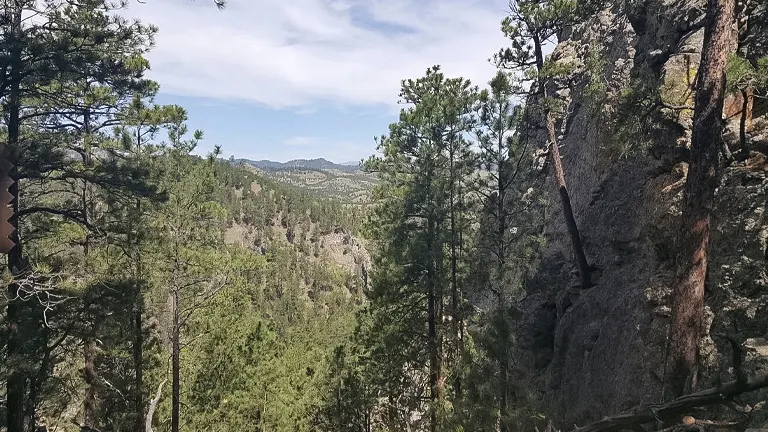
Home to a thriving population of wildlife, including the iconic bison, prairie dogs, bighorn sheep, and more, Custer State Park beckons adventurers with its myriad trails, scenic drives, and the allure of its five pristine lakes. From the annual bison roundup to the historic Peter Norbeck Center, Custer State Park invites visitors to explore its diverse offerings, promising an immersive journey into the heart of one of South Dakota’s most cherished natural treasures.
Characterizing Features of the Custer State Park
- Iconic Bison Herd: Custer State Park is renowned for its resident herd of over 1,500 bison, making it one of the largest publicly-owned herds in the world. The annual bison roundup is a notable event, attracting thousands of spectators and showcasing the park’s commitment to wildlife conservation.
- Scenic Drives: The park boasts two famous scenic drives—Needles Highway and Wildlife Loop Road. These routes offer breathtaking views of granite peaks, pristine lakes, and opportunities to witness wildlife, including bison and prairie dogs.
- Diverse Wildlife: Beyond bison, the park is home to a variety of wildlife species, including prairie dogs, bighorn sheep, elk, deer, mountain goats, coyotes, river otters, pronghorn, cougars, and feral burros. This diversity attracts nature enthusiasts and provides unique opportunities for wildlife observation.
- Outdoor Recreation: Custer State Park offers a range of outdoor activities, from hiking trails like the Little Devils Tower Trail to water-based activities in its five picturesque lakes. Visitors can enjoy boating, swimming, and fishing while surrounded by the park’s natural beauty.
- Historic Contributions: The park’s history is shaped by the Civilian Conservation Corps, which played a vital role in the 1930s by building roads, campgrounds, and dams. The Peter Norbeck Center, a National Register of Historic Places-listed site, showcases the park’s natural history and cultural heritage through exhibits.
- Expansive Terrain: Covering over 71,000 acres, Custer State Park features diverse landscapes, including rolling prairie grasslands and rugged mountains. The varied terrain contributes to the park’s scenic beauty and provides a habitat for its diverse wildlife.
- Proximity to Attractions: Situated in the Black Hills, the park is near other notable attractions such as Mount Rushmore, Wind Cave National Park, Jewel Cave National Monument, Crazy Horse Memorial, and Badlands National Park, offering visitors a chance to explore the broader region.
- Visitor Center: The modern visitor center, opened in 2016, serves as an informative hub, offering insights into the park’s wildlife, history, and layout. Visitors can engage with exhibits and a short film to enhance their understanding of Custer State Park.
- Annual Events: In addition to the bison roundup, the park hosts various events and programs, including naturalist-led activities, festivals, and educational programs. These events provide visitors with unique opportunities to connect with the park’s natural and cultural offerings.
- Preservation Efforts: Custer State Park has a history of expansion and preservation, with an additional 22,900 acres added in 1964. The park’s ongoing efforts focus on maintaining ecological balance and preserving the natural beauty that defines this South Dakota gem.
History
Established in 1912, Custer State Park, located in the Black Hills of South Dakota, holds a storied history as the state’s first and largest state park. Named in honor of Lt. Colonel George Armstrong Custer, the park’s origins trace back to a collection of sixteen sections of land, which were later consolidated into one expansive block due to the challenges posed by the rugged terrain. The 1930s saw a transformative period for the park, as the Civilian Conservation Corps played a pivotal role in constructing miles of roads, campgrounds, and dams. These efforts laid the foundation for the park’s growth and facilitated water recreation activities.

In 1964, an additional 22,900 acres were added, further expanding its boundaries. Notably, the park is home to a herd of over 1,500 bison, and the annual bison roundup, initiated in 1965, has become a celebrated event, drawing thousands of spectators. Today, Custer State Park stands as a testament to conservation efforts, offering visitors a unique blend of natural beauty, wildlife diversity, and a rich tapestry of historical significance.
Importance in Conservation and Recreation of Custer State Park
Custer State Park holds a dual significance as a vital hub for both conservation and recreation. On the conservation front, the park’s expansive 71,000 acres serve as a haven for diverse wildlife, playing a crucial role in the preservation of ecosystems unique to the Black Hills region. The resident herd of over 1,500 bison, alongside prairie dogs, bighorn sheep, elk, and various other species, underscores the park’s commitment to biodiversity. The annual bison roundup not only captivates visitors but also stands as a carefully orchestrated conservation effort, ensuring the ecological balance of the park. Additionally, Custer State Park’s historical role in the 1930s, with the Civilian Conservation Corps constructing essential infrastructure, exemplifies a commitment to environmental stewardship.

Simultaneously, the park’s recreational offerings, from scenic drives like Needles Highway to hiking trails and water-based activities, provide a dynamic and immersive experience for visitors. Beyond its natural allure, Custer State Park’s proximity to other iconic attractions such as Mount Rushmore and Wind Cave National Park positions it as a cornerstone for tourism, fostering an appreciation for the region’s natural beauty and conservation efforts. In essence, Custer State Park stands as a harmonious blend of conservation initiatives and recreational opportunities, showcasing the delicate balance between preserving the environment and providing a memorable experience for those who seek to explore its diverse landscapes.
Unique Location of Custer State Park
Located within the captivating landscapes of the Black Hills in South Dakota, Custer State Park boasts a unique location that sets it apart as a natural gem. Spanning over 71,000 acres, the park’s terrain unfolds with a dramatic diversity that encompasses rolling prairie grasslands and rugged mountain peaks. Surrounded by the Black Hills National Forest, the park is cradled in a region rich in geological wonders, offering a striking contrast of granite formations against the lush greenery. Its strategic placement near iconic attractions like Mount Rushmore, Wind Cave National Park, and Jewel Cave National Monument further enhances its allure.
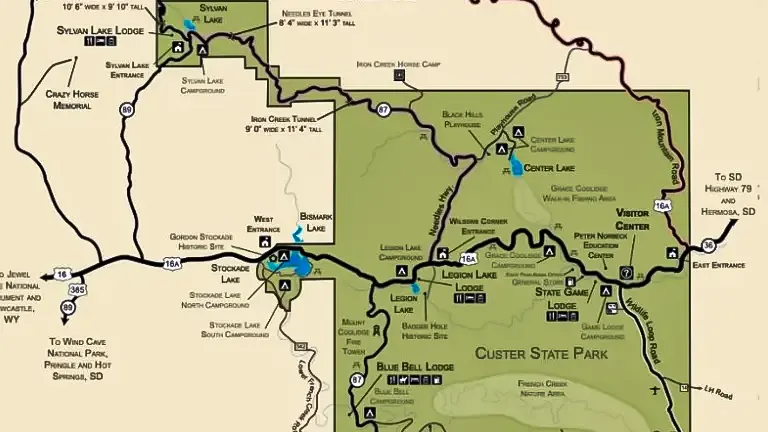
The proximity to these renowned sites positions Custer State Park as a gateway to exploring the broader natural wonders of the region. This distinctive location not only contributes to the park’s scenic beauty but also underscores its importance as a hub for outdoor enthusiasts seeking a harmonious blend of diverse landscapes and cultural landmarks in the heart of the Black Hills.
Diverse Vegetation and Unique Plant Species:
- Ponderosa Pine Forests: Custer State Park is characterized by extensive stands of ponderosa pine forests, contributing to the park’s scenic beauty and providing habitat for various wildlife species.
- Aspen Groves: Aspen groves dot the landscape, especially in areas with higher elevations. These groves contribute to the park’s diverse and visually striking vegetation.
- Prairie Grasslands: The park features expansive prairie grasslands, showcasing a mix of native grass species that play a crucial role in maintaining the park’s ecosystem and supporting its diverse wildlife.
- Wildflowers: Throughout the park, a vibrant display of wildflowers adds splashes of color to the landscape. These include species like lupine, fireweed, Indian paintbrush, and various others, creating a visually appealing and ecologically significant environment.
- Ferns and Mosses: In shaded and moist areas, ferns and mosses thrive, adding to the diversity of plant life within the park. These species are often found along streambanks and in the vicinity of the park’s lakes.
- Black Hills Spruce: This native evergreen species is part of the diverse forest composition, contributing to the park’s unique plant community. The Black Hills spruce is well-adapted to the region’s climate and soil conditions.
- Chokecherry and Saskatoon Serviceberry: These shrub species are found throughout the park and are important for both wildlife and traditional uses. Chokecherries, in particular, are a vital food source for various bird species.
- Alder Thickets: Along waterways and in moist areas, alder thickets thrive. These dense shrub communities provide habitat for a variety of birds and small mammals.
- Rocky Mountain Juniper: Scattered throughout the park, the Rocky Mountain juniper is a hardy evergreen species that adds to the park’s diverse vegetation, particularly in rocky or higher elevation areas.
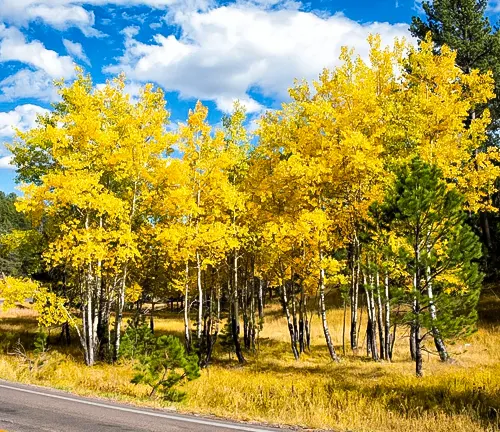

Custer State Park’s diverse vegetation not only enhances its natural beauty but also plays a critical role in supporting the varied wildlife species that call the park home. The combination of forests, grasslands, and unique plant communities creates a rich tapestry of ecosystems within this South Dakota treasure.
Fauna:
- Bison: Custer State Park is renowned for its resident herd of over 1,500 bison, making it one of the largest publicly-owned herds in the world. The annual bison roundup is a spectacle that showcases the park’s commitment to wildlife management and conservation.
- Prairie Dogs: The park is home to thriving prairie dog towns, where these social rodents create intricate burrow systems. Their presence contributes to the park’s unique prairie ecosystem and provides a critical food source for various predators.
- Bighorn Sheep: Custer State Park supports a population of bighorn sheep, with these iconic mammals often spotted on the rugged mountainous terrain. The park’s varied landscapes offer suitable habitats for their survival.
- Elk: Elk can be found throughout the park, especially in areas with a mix of forests and meadows. Their presence adds to the diversity of large herbivores in the region.
- Mule Deer: The park is home to mule deer, which are often seen in grassland and forested areas. These agile herbivores contribute to the park’s overall biodiversity.
- White-Tailed Deer: White-tailed deer are prevalent in Custer State Park, utilizing the diverse habitats, including woodlands and open grasslands. Their adaptability to different environments makes them a common sight for park visitors.
- Mountain Goats: Adapted to the rocky terrain, mountain goats find suitable habitats in the park’s higher elevations. Their presence adds to the alpine character of certain areas within the park.
- Coyotes: Thriving in a variety of environments, including prairies and woodlands, coyotes are common in Custer State Park. They play a role in controlling rodent populations and contribute to the park’s ecological balance.
- River Otters: In aquatic habitats such as lakes and streams, river otters are active residents. Their playful behavior and sleek presence add to the diversity of wildlife experiences in the park.
- Pronghorn: These swift and agile antelope-like mammals can be spotted in the park’s open grasslands. Their unique adaptations make them well-suited to the prairie environments of Custer State Park.
- Cougars: Though elusive and rarely seen, cougars inhabit the park’s forests and rocky landscapes. Their presence as a top predator contributes to the park’s overall ecosystem dynamics.
- Feral Burros: Not native to the region, feral burros are a charming addition to the park’s fauna. Known for approaching vehicles in search of food, they add a unique and sometimes amusing element to the visitor experience.
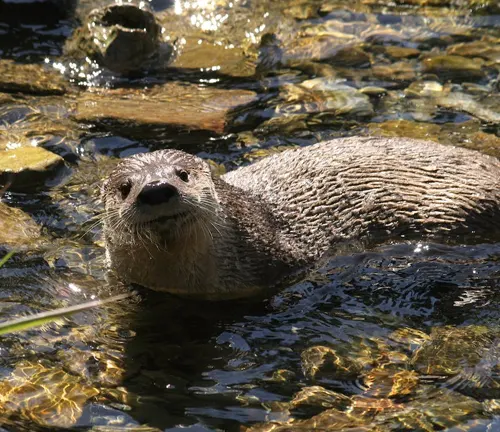
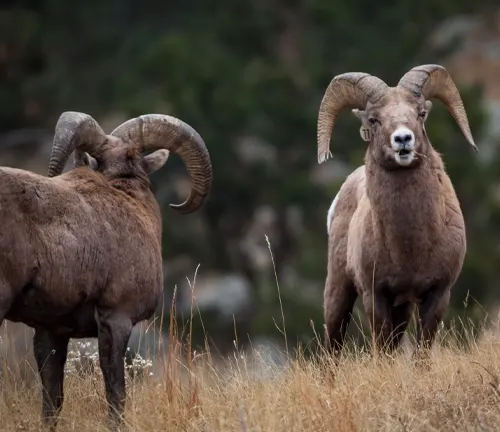
Custer State Park’s diverse fauna is a testament to the park’s commitment to wildlife conservation and habitat preservation. The mix of large herbivores, predators, and smaller mammals creates a balanced and thriving ecosystem, offering visitors a chance to witness the wonders of the Black Hills’ natural biodiversity.
Importance as a Wildlife Corridor and Habitat for Threatened Species
Custer State Park stands not only as a breathtaking destination for visitors but also as a crucial wildlife corridor and habitat, playing a pivotal role in the conservation of diverse species, including those facing threats. The expansive park, covering over 71,000 acres, serves as a sanctuary for a wide array of wildlife, with its diverse landscapes offering habitats ranging from prairie grasslands to rugged mountains. Its significance as a wildlife corridor allows for the natural movement of species, promoting genetic diversity and contributing to the overall health of regional ecosystems.

Notably, the park provides essential habitat for threatened and sensitive species such as the bighorn sheep and mountain goats, both of which find refuge in the park’s rocky and elevated terrain. The strategic conservation efforts within Custer State Park underscore its importance in safeguarding vulnerable species, contributing to broader regional biodiversity, and serving as a model for the coexistence of wildlife and human recreation within the Black Hills ecosystem.
Activities in Custer State Park for Visitors
1. Scenic Drives
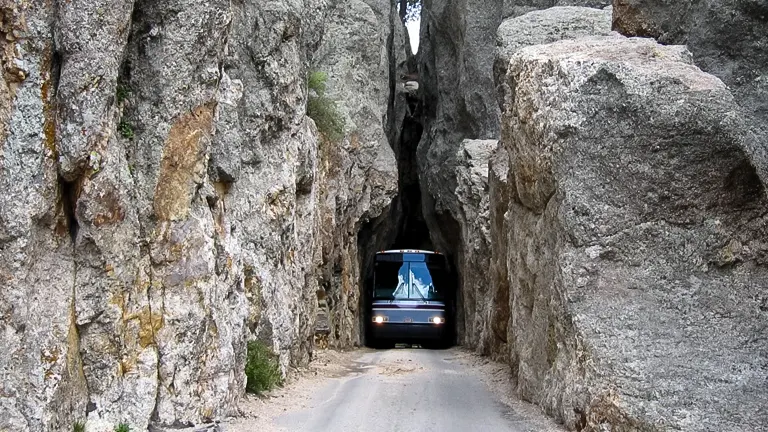
Visitors to Custer State Park can embark on unforgettable scenic drives, such as the renowned Needles Highway and Wildlife Loop Road. Needles Highway winds through impressive granite spires, providing breathtaking views and opportunities to witness the park’s diverse wildlife. Wildlife Loop Road offers a leisurely drive through key habitats, allowing visitors to observe bison herds, prairie dog towns, and a variety of other animals.
2. Hiking Trails
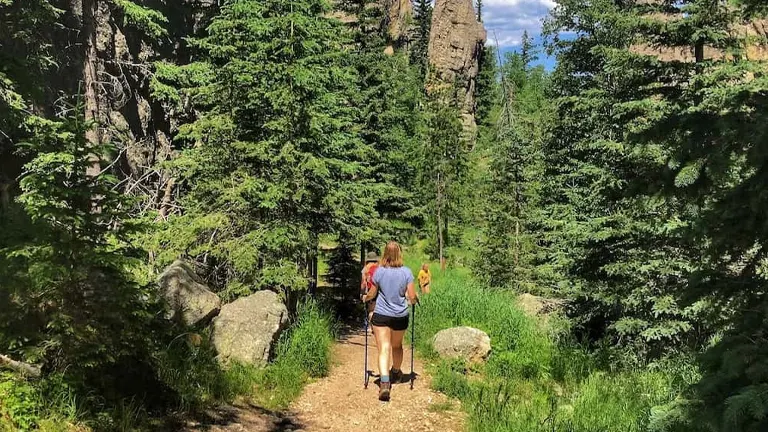
The park boasts an extensive network of hiking trails catering to various skill levels. Trails like the Little Devils Tower offer panoramic views of the surrounding landscape, while Sylvan Lake Shore Trail provides a scenic lakeside stroll. Hiking enthusiasts can explore the diverse ecosystems, from dense forests to open meadows, offering a close encounter with the park’s natural beauty.
3. Wildlife Viewing
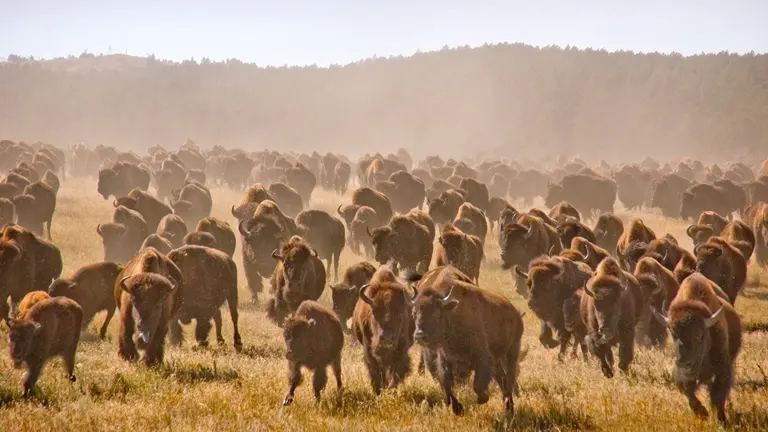
Custer State Park is a haven for wildlife enthusiasts. The park’s vast landscapes offer ample opportunities for wildlife observation, with bison, prairie dogs, bighorn sheep, elk, and a myriad of bird species calling the park home. Wildlife Loop Road is especially popular for its accessibility and the likelihood of spotting iconic animals in their natural habitats.
4. Fishing
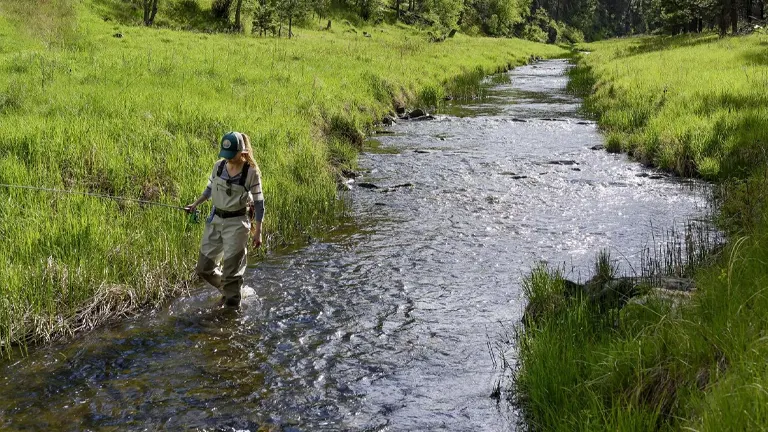
The park’s five picturesque lakes, including Sylvan Lake and Stockade Lake, provide excellent fishing opportunities. Anglers can cast their lines for a variety of fish species, creating a serene and rewarding experience surrounded by the park’s scenic beauty. Fishing is permitted, and regulations ensure the sustainability of the aquatic ecosystems.
5. Boating and Swimming

Visitors seeking water-based activities can enjoy boating and swimming in the park’s lakes. Sylvan Lake, with its clear waters and scenic surroundings, is a popular spot for both boating and swimming. The calm lakes offer a refreshing escape, allowing visitors to connect with nature while engaging in recreational water activities.
6. Annual Bison Roundup
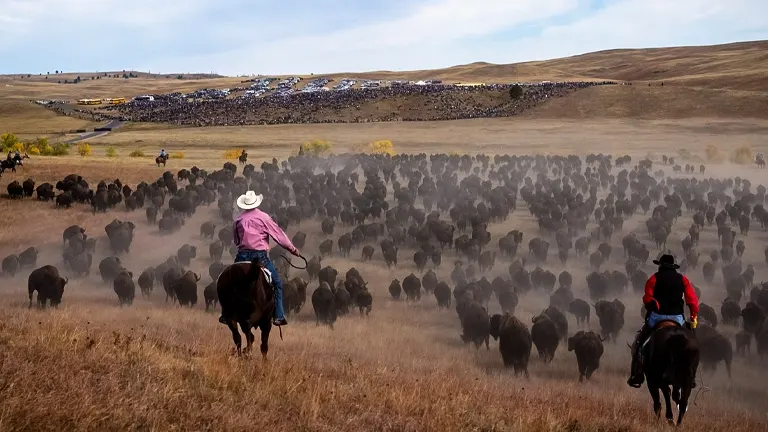
An iconic event in Custer State Park is the annual bison roundup, a spectacle that draws thousands of spectators. This tradition, dating back to 1965, involves herding the bison for health checks and population management. Visitors have the unique opportunity to witness this significant conservation effort and gain insights into the park’s commitment to wildlife management.
7. Visitor Center Exploration

Opened in 2016, the park’s visitor center serves as an informative hub. Visitors can delve into exhibits detailing the park’s wildlife, history, and layout. The center provides a comprehensive introduction to Custer State Park, enhancing the overall visitor experience with interactive displays and a 20-minute film.
8. Camping
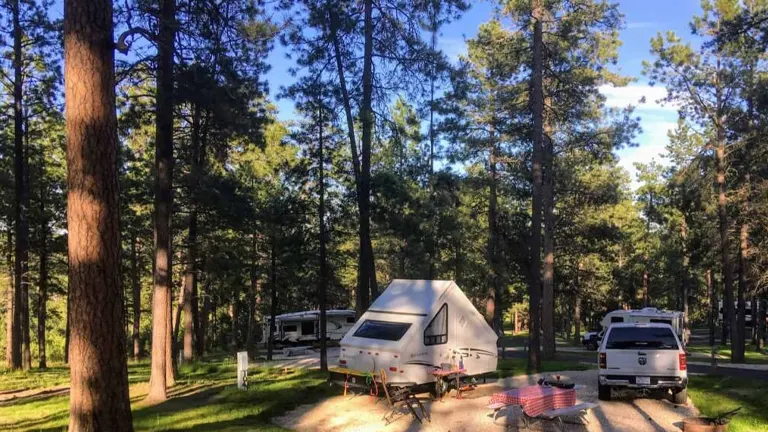
For those seeking a more immersive experience, Custer State Park offers several campgrounds nestled within its natural landscapes. Campers can enjoy the tranquility of the Black Hills, with campfire evenings under starlit skies. The park provides a range of camping options, from rustic sites to more developed facilities.
Custer State Park’s diverse activities cater to a broad range of interests, inviting visitors to engage with its natural wonders, wildlife, and recreational offerings. Whether exploring by car, foot, or boat, the park provides an enriching experience that showcases the unique beauty of the Black Hills region.
Conservation and Management
- Wildlife Management: Custer State Park excels in wildlife management, evident in the annual bison roundup. This tradition not only ensures the health of the iconic bison herd but also maintains ecological balance. The park’s commitment to sustaining diverse species showcases its role as a leader in wildlife conservation within the region.
- Habitat Preservation: The park actively preserves varied habitats, from prairie grasslands to mountainous terrain. This commitment is not only for the well-being of its resident wildlife but also to provide visitors with a diverse and thriving ecosystem. Efforts include controlled burns to maintain the health of grasslands and habitat restoration projects.
- Educational Programs: Custer State Park engages visitors in educational programs, fostering an understanding of its ecosystems and conservation initiatives. The guided tours, led by knowledgeable naturalists, provide insights into the park’s natural history and the importance of responsible outdoor practices, creating an informed and environmentally conscious visitor base.
- Collaborative Conservation: The park actively collaborates with governmental agencies, conservation organizations, and the local community to enhance its conservation efforts. This collaborative approach extends to initiatives beyond the park’s boundaries, contributing to broader regional conservation goals and promoting a shared commitment to preserving the Black Hills’ natural heritage.
- Trail Management: Custer State Park’s extensive trail system is managed to balance recreational access with habitat protection. Trails are designed to minimize environmental impact, with designated paths and educational signage promoting responsible hiking. This approach ensures that visitors can enjoy the park’s beauty while minimizing disturbances to sensitive ecosystems.
- Preservation of Historical Sites: Beyond natural conservation, the park preserves historical sites such as the Peter Norbeck Center. This National Register of Historic Places-listed center not only showcases the park’s cultural heritage but also serves as a starting point for educational programs, emphasizing the interconnectedness of nature and history.
- Sustainable Resource Management: Custer State Park practices sustainable resource management, balancing the needs of visitors with the preservation of its natural resources. This includes responsible water management in the park’s lakes, waste reduction initiatives, and ongoing efforts to minimize the ecological footprint of park operations, ensuring a lasting legacy of conservation.
- Adaptive Management Strategies: The park employs adaptive management strategies to respond to changing environmental conditions and emerging conservation challenges. This flexibility allows for informed decision-making, ensuring that conservation practices remain effective in the face of evolving threats such as climate change and invasive species, maintaining the park’s ecological integrity.
Recommendation
I strongly encourage you to discover the wonders of Custer State Park, where the enchanting fusion of natural splendor and historical significance awaits. With its varied ecosystems, distinctive landmarks, and an array of recreational options, the park promises a unique and immersive experience. Delve into responsible outdoor pursuits such as hiking and wildlife observation, all while respecting the ongoing conservation endeavors. Whether traversing the scenic trails, exploring historic sites, or participating in collaborative conservation initiatives, Custer State Park stands as an essential destination for those in search of a harmonious blend of nature and recreation.
Conclusion
In summary, Custer State Park is a harmonious blend of conservation, recreation, and cultural heritage. Its diverse landscapes, from prairie grasslands to granite peaks, provide a captivating environment. The park’s commitment to preservation, evident in the annual bison roundup and historic contributions, reflects its dedication to stewardship. Whether exploring scenic drives, hiking trails, or engaging in water activities, visitors discover a balance between safeguarding natural wonders and experiencing the untouched beauty of the Black Hills. Custer State Park, at the heart of South Dakota, stands as a testament to the profound connection between nature and the human spirit.
Encouraging Responsible Visitation
Reflecting on my time at Custer State Park, I am inspired to promote responsible exploration. The dynamic landscapes of this park flourish when visitors embrace mindful engagement. Whether you’re an enthusiastic hiker, a photography aficionado, or a family in search of a weekend getaway, every experience in Custer State Park provides an opportunity to actively participate in its ongoing conservation initiatives.
FAQs
- What makes Custer State Park unique among South Dakota’s natural attractions?
Custer State Park stands out for its diverse landscapes, ranging from rolling prairie grasslands to rugged granite peaks. It is not only South Dakota’s largest state park but also a haven for wildlife and a hub for outdoor activities. - Is camping allowed in Custer State Park, and what options are available?
Yes, Custer State Park offers various camping options, from rustic sites to more developed facilities with amenities. The park provides a range of camping experiences, allowing visitors to immerse themselves in the natural beauty of the Black Hills. - What wildlife can I expect to encounter in Custer State Park?
The park is home to a diverse array of wildlife, including the famous resident bison herd, prairie dogs, bighorn sheep, elk, deer, and various bird species. The annual bison roundup is a unique event that draws visitors to witness this conservation effort. - Are there guided tours or programs available for visitors interested in learning more about the park’s natural history?
Yes, Custer State Park offers guided tours and naturalist-led programs that provide insights into the park’s natural history, cultural heritage, and wildlife. The Peter Norbeck Center serves as a starting point for many of these educational experiences. - Can I engage in water activities in Custer State Park?
Absolutely! The park’s five lakes offer opportunities for boating, swimming, and fishing. Sylvan Lake, in particular, is a popular spot for water-based recreation against the backdrop of stunning scenery. - What is the significance of the annual bison roundup in Custer State Park?
The annual bison roundup is a vital conservation effort to manage the park’s bison population. It involves health checks, population management, and serves as an educational spectacle for thousands of spectators. - How can I access Custer State Park from Rapid City?
Custer State Park is easily accessible by road from Rapid City. The scenic drive provides an enjoyable journey through the Black Hills, offering a taste of the region’s natural beauty before reaching the park’s entrance. - Are there any cultural attractions within Custer State Park?
Yes, the park features the Peter Norbeck Center, listed on the National Register of Historic Places. This center offers exhibits on the park’s natural history and cultural heritage, including wildlife dioramas, a CCC bunkhouse, and a gold prospecting display.
As our journey through Custer State Park concludes, it leaves an indelible mark—a canvas of granite peaks, untamed bison, and winding scenic drives. The echoes of preservation and nature’s allure linger. Until the next adventure beckons, Custer State Park remains a cherished chapter in the tapestry of exploration.


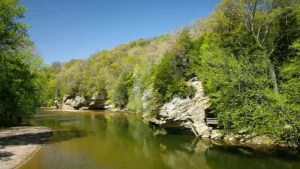

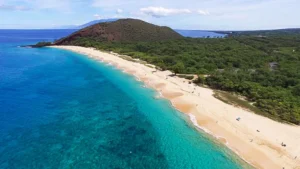
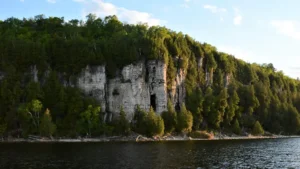

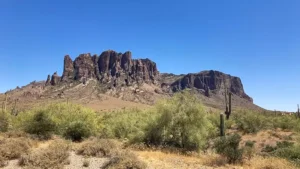

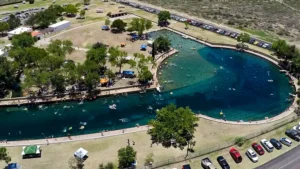
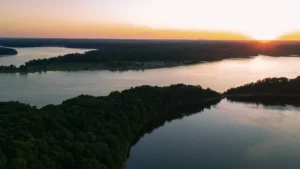
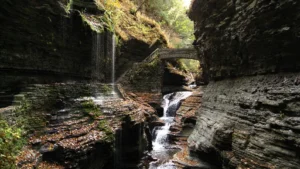

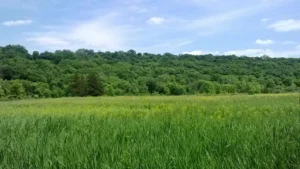
Leave your comment